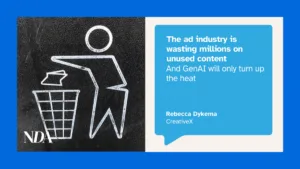By Dean Lanzman, Head of Data at Mullenlowe Profero
The rapid shift to direct-to-consumer (D2C) eCommerce has created gaps in customers’ expectations for how brands connect with them through CRM and loyalty marketing.
Whilst advancements in marketing technology have enabled brands to close the empathy gap, few are listening to the signals and responding to customers effectively. Moreover, they are not expressing their personality in a way that engages their audience through direct channels.
Brands must reconnect with their customers
Advances in marketing technology have provided brands with a full range of valuable tools to become more efficient across communication platforms, including the rapid and scalable method of personalisation. However, this technology is only as good as its user. Just like the saying goes, “a bad worker always blames their tools”.
The ability to genuinely connect with consumers requires a much deeper understanding of consumers’ changing attitudes and behaviours: their wants, needs, motivations and desires. It requires us to communicate on a much more personal level and, just like any valuable relationship, show humanity and empathy throughout their journey.
COVID-19 has changed the way that customers engage with brands. They are reflecting on their choices and questioning their (previously unwavering) loyalty, so brands need to recognise these signals of reappraisal as early as possible. This can be done by identifying the relevant data signals and having more reactive strategies in place.
Learn to listen and react
A great starting point is to examine your KPIs and ask yourself how they benefit the customer. For example, are your KPIs genuinely balanced between customer and sales targets, or are they simply paying lip service to the customer in favour of short-term sales and margin?
Staying honest to your core brand purpose is fundamental. Brands can go one step further in direct channels, and they should listen to the individual and adjust their tone accordingly. For example, suppose a loyal customer experiences poor customer service. In that situation, it wouldn’t be suitable to send them a pre-planned “loyalty” email that assumes their love and affection towards the brand. Instead, they should recognise their upset, directly respond to their concerns and hope to win back their affection. Above all, brands must be agile and react immediately to a customer’s experience, good or bad.
Improving your brand energy
We often see failed brand attempts to add a little of the latest tech to an otherwise dull campaign, which feels a bit like a parent trying to be cool on Instagram (like myself!). Successful brands will converge tech and creativity seamlessly, and I truly believe the work we produced for the NHS is a brilliant example of how to win in this space.
Last year, the NHS faced its biggest challenge ever: filling 100,000 vacancies across 350 careers. Prospective applicants lacked confidence, so to help them feel more self-assured, we knew it was essential to understand them on a deeper emotional level.
MullenLowe Profero wanted to get under the skin of applicants’ motivations, hesitations, interests and career timings, so we developed newly enhanced data creation tactics to provide us with unique insights into each prospective applicant. This was converted into a highly curated CRM programme to guide them through a potentially daunting journey. I like to think that this campaign, alongside our customer-centric positioning, has helped align a new approach to our craft.
Succeeding in a D2C world
To move forward with a successful D2C model, brands must undergo significant changes to transform their customer engagement strategies. COVID has left many businesses with fewer signals and a lack of understanding of their customers’ needs and feelings.
Marketers must reconnect here as a starting point to build a case for change. Once they understand their customers’ needs, motivations and desires, only then can they tailor their personality and energy to interact with their customers more effectively.









